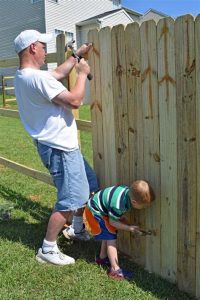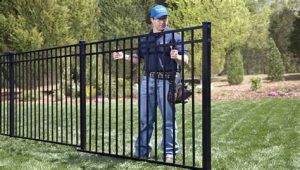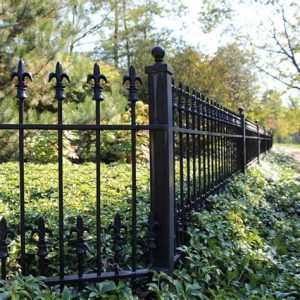Explore essential insights on the fence permit process, seasonal challenges, and tips to navigate delays and secure timely approvals.As homeowners embark on property enhancements, understanding the nuances of fence permit approvals can be a daunting task. While it might seem straightforward, various factors, especially seasonal changes, can significantly impact the process. This blog post aims to shed light on the intricacies of fence permits, highlighting how different seasons can influence weather conditions, inspection schedules, and approval timelines. Whether you’re planning to install a sturdy privacy fence in the sweltering summer or a decorative picket fence in the crisp fall, it’s crucial to be aware of the potential hurdles brought about by seasonal fluctuations. Join us as we explore the permit process, discuss the delays that seasonality can introduce, and provide practical tips to navigate these challenges effectively. Your dream fence might be closer than you think, but being well-informed is the key to achieving it without unnecessary setbacks.
Understanding the Fence Permit Process
When planning to install a fence, it’s essential to understand the fence permit process that varies based on your location. Obtaining a permit is not just a bureaucratic formality; it’s crucial for ensuring that your fence complies with local building codes and community standards.
- Research Local Regulations: Most municipalities have specific regulations regarding fence height, materials, and placement. Understanding these regulations early on can save you time and frustration later.
- Prepare Your Application: This usually includes submitting detailed plans of the proposed fence, including dimensions and location on your property. Some places may also require a survey of your land.
- Submit for Approval: After preparing your application, it’s time to submit it to your local building authority. This phase may involve public notices or hearings, depending on your area’s regulations.
Once submitted, the timing of permit approvals can be affected by factors such as the time of year and local staffing or processing capacities, particularly during peak seasons. Being aware of these factors allows you to better plan your fence installation project.
Impact of Seasonal Weather Conditions
The impact of seasonal weather conditions on fence permit approvals cannot be overlooked. Different seasons bring about varying weather patterns that can both positively and negatively influence the permit process. For instance, heavy snowfall or extreme rain may hinder construction activity, thereby causing potential delays in obtaining necessary inspections.
In areas where winter is lengthy, ground freezing can impede the ability to install fence posts, pushing back the timeline for projects. On the other hand, summer storms can create dangerous working conditions that necessitate further safety inspections, leading to a backlog in permit approvals as officials respond to seasonal challenges. Local and state regulations may dictate specific timelines for inspections that must adapt to these changing conditions.
Additionally, the spring thaw can reveal issues such as flooding or soil erosion, which may necessitate additional assessments before a permit is granted.
Delays in Inspection and Approval Times
When it comes to obtaining a fence permit, one of the most significant hurdles can be the delays in inspection and approval times. Understanding these delays can help homeowners better navigate the permitting process.
Seasonal changes often exacerbate these delays. For instance, in winter, inspections may be slowed due to inclement weather, while in spring, a sudden influx of applications can overwhelm local permitting offices. As professionals catch up with requests, homeowners might find themselves waiting longer than expected.
Moreover, factors such as resource availability and code changes can lead to additional approval delays. If local jurisdictions are understaffed, or if building codes are updated, the review process can take longer. It’s crucial to stay informed and prepared to mitigate any potential setbacks.
| Season | Common Delays | Tips to Mitigate |
|---|---|---|
| Winter | Weather-related slowdowns | Submit early; consider off-season installation |
| Spring | High volume of applications | Plan ahead; check local timelines |
| Summer | Staff vacations | File well in advance |
| Fall | Budgeting changes |
Adapting to Seasonal Permitting Challenges
Seasonal changes can significantly impact the fence permit process, posing unique challenges for homeowners and contractors alike. Whether it’s the heavy snowfall of winter or the rains of spring, various weather conditions can affect the timelines and requirements for obtaining necessary permits. Understanding how to adapt to these challenges can streamline the installation process.
One major factor to consider is the weather impact on construction sites. Inclement weather can lead to a slowdown in work, making it difficult for inspectors to perform their duties or for contractors to complete their tasks on schedule. To avoid additional delays, it’s essential to plan your project timing around expected seasonal shifts to ensure the best possible conditions for work.
Moreover, a good practice is to stay informed about your local regulations and possible seasonal adjustments in permit requirements. Local governments might have different rules during certain times of the year. Some municipalities even have specific permits or inspections needed to account for seasonal impacts, so understanding these nuances can prevent unnecessary hurdles. Therefore, communication with your local permitting office is crucial for a smooth process.
Tips for Navigating Seasonal Approval Hurdles
Obtaining a fence permit can be a daunting task, especially during seasonal changes. From increased workloads at local offices to weather-related challenges, navigating the approval process can become increasingly complicated. Below are some tips to help you manage these hurdles effectively.
1. Plan Ahead
Being proactive is key. Start your permit application as early as possible, especially before peak seasons when demand is high. Research your local permit requirements thoroughly, and be aware of any seasonal fluctuations in processing times.
2. Stay Informed About Weather Conditions
Weather can have a significant impact on the permit approval process. For instance, heavy rainfall or snowfall may cause delays in inspections and subsequent approvals. Keeping an eye on local weather updates will help you adjust your timeline accordingly.
3. Communicate with Local Officials
Regular communication with local officials can make a substantial difference. They can provide insights into current approval timelines, any potential delays, or additional requirements that may arise due to seasonal conditions. Don’t hesitate to reach out to them for updates.
4. Prepare for Inspection
Inspectors might face their own challenges due to seasonal changes such as flooding or snow. Ensure your fence area is easily accessible and free of obstacles to facilitate a smoother inspection process. A well-prepared site can help reduce the chances of delays.
By following these guidelines, you can mitigate the challenges presented by seasonal approval hurdles.
Frequently Asked Questions
What factors contribute to seasonal changes in fence permit approvals?
Seasonal changes can affect fence permit approvals due to variations in weather conditions, regional construction schedules, and local government workloads.
How do spring and summer affect the permit approval process?
Spring and summer often see an increase in permit applications due to favorable weather conditions, which may lead to quicker processing times as municipalities work to accommodate the demand.
Do municipalities have different criteria for approving fences in different seasons?
While the basic criteria for fence permits generally remain constant, some municipalities may adjust their priorities or processing times based on seasonal demands or specific weather-related policies.
How does winter weather impact fence construction and permit approvals?
Winter weather can slow down construction and may lead to more cautious evaluations of permits, causing potential delays in approval as planners assess site conditions.
Are there specific months when fence permit approvals are highest?
Typically, late spring and early summer months, such as May and June, experience the highest number of fence permit approvals due to increased consumer interest and better weather for construction.
What should homeowners consider when applying for a fence permit in different seasons?
Homeowners should consider local building codes, potential seasonal delays, and the impact of weather on both the approval process and construction timelines.
Can seasonal changes affect the type of fence materials approved?
While fence material approval is primarily based on building codes and regulations, seasonal considerations might lead to preferences for materials that perform better under certain weather conditions.





